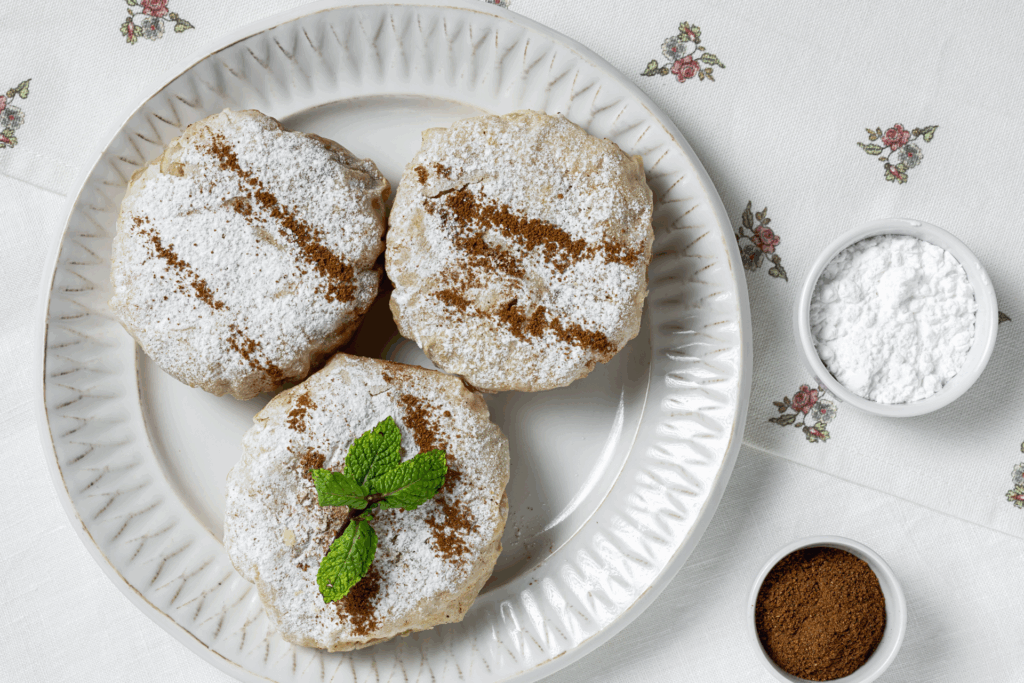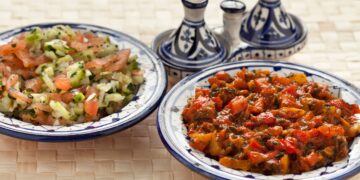Few dishes capture the soul of Moroccan cuisine as beautifully as pastilla (also spelled bastilla). This golden, flaky pie brings together layers of crispy pastry, tender meat, spices, and a touch of sweetness in a way that surprises and delights first-time eaters. Often served at weddings, celebrations, and family gatherings, pastilla is more than just a dish—it is a symbol of Moroccan hospitality and culinary artistry. Its unique fusion of sweet and savory flavors makes it a true ambassador of Moroccan gastronomy, leaving visitors with an unforgettable impression.
Origins and History
Pastilla has deep historical roots that reflect Morocco’s diverse cultural influences. Believed to have originated in Andalusia before finding its home in Morocco, the dish blends Arab, Berber, and even Mediterranean culinary traditions.
Traditionally, the classic pastilla was made with pigeon meat, reflecting its status as a luxury dish served at banquets and special occasions. Over time, chicken became the more common filling, while modern variations even use seafood or vegetarian alternatives.
Regardless of the filling, the essence of pastilla remains the same: a celebration of balance between delicate textures and bold flavors.
Layers of Flavor
The magic of pastilla lies in its layers. At its core, the dish begins with spiced, slow-cooked poeltry (chicken) simmered with onions, ginger, saffron, cinnamon, and fresh herbs. This flavorful base is enriched with beaten eggs, which add creaminess and depth.
Then comes the surprise: a layer of toasted almonds mixed with sugar and cinnamon, introducing a sweet crunch that contrasts with the savory chicken.
All of this is carefully wrapped in thin sheets of warqa pastry, similar to phyllo dough, and baked until golden brown. The finishing touch is a dusting of powdered sugar and cinnamon, giving the pie its distinctive Moroccan signature.
A Dish of Celebration
In Moroccan culture, pastilla is not an everyday meal—it is a dish of celebration. Families often prepare it for weddings, religious holidays, and gatherings that bring relatives together. Serving pastilla is a sign of generosity, as it is a time-consuming dish that requires skill and patience.
In many households, mothers and grandmothers pass down their unique recipes, ensuring that the art of making pastilla continues from one generation to the next. Beyond its taste, the dish symbolizes joy, togetherness, and the Moroccan value of honoring guests with something truly special.
Hiking Trails in the Middle Atlas Mountains
The Middle Atlas Mountains are often overshadowed by the High Atlas or the Rif, yet they hold some of Morocco’s...
From Passion to Profession: Turning Creative Skills into Income
In Morocco, more young people are transforming their creative talents into careers. Whether it’s photography, calligraphy, fashion design, or digital...
Young Moroccans Abroad: Balancing Wanderlust and Roots
For many young Moroccans, the dream of exploring the world is irresistible. Whether through study, work, or travel, living abroad...
Networking for Millennials: How to Build Real Connections in Casablanca and Rabat
In Morocco’s fast-paced urban centers, especially Casablanca and Rabat, networking is essential for millennials seeking growth and opportunities. No longer...
Modern Twists on a Classic
While the chicken or pigeon pastilla remains the most traditional, Morocco has also embraced innovation when it comes to this beloved pie. Coastal cities like Agadir and Casablanca are famous for their seafood pastillas, filled with shrimp, fish, and vermicelli noodles.
Vegetarian versions are also gaining popularity, often featuring mushrooms, spinach, or a mix of roasted vegetables. Restaurants across Morocco experiment with size as well—miniature pastillas are served as appetizers, while grand versions take center stage at banquets. This versatility allows the dish to remain timeless while adapting to new tastes and dietary preferences.

Pastilla Beyond Morocco
The reputation of pastilla has spread far beyond Morocco’s borders. Tourists often leave the country with lasting memories of their first bite, and Moroccan restaurants abroad frequently feature it as a highlight of their menus.
In recent years, culinary festivals and celebrity chefs have helped introduce pastilla to global audiences, presenting it not just as food but as a cultural experience. Its combination of savory and sweet, crispy and tender, familiar and exotic, makes it appealing to adventurous eaters worldwide.
For many, pastilla represents Morocco itself: a land where cultures blend harmoniously to create something unique and unforgettable.
Conclusion
Pastilla is more than just a dish; it is a masterpiece of Moroccan cuisine that embodies history, culture, and artistry. From its Andalusian roots to its place at modern Moroccan celebrations, it continues to enchant with its delicate balance of flavors and textures.
Whether filled with chicken, seafood, or vegetables, pastilla remains a symbol of generosity and tradition. For those who taste it, the memory lingers long after the last bite—a reminder that Moroccan food is not only about nourishment but also about storytelling, hospitality, and the joy of sharing.
















Discussion about this post